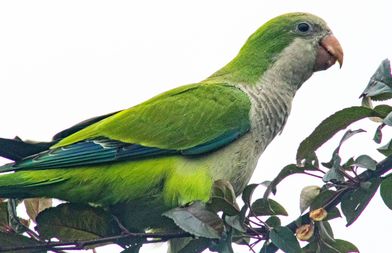
The cause of Superficial Chronic Ulcerative Dermatitis is not fully understood and is most commonly seen in African Grey Parrots. Common bacteria involved include Enterobacter cloacae, Escherichia coli, and Staphylococcus aureus. Cases of methicillin-resistant Staphylococcus aureas (MRSA) have been reported.
Dermatologically, birds lack any sweat or sebaceous glands on the skin with the exception of the preen gland and within the ear canal. Their skin produces lipids and fats that support waterproofing and inhibit overgrowth of microorganisms. A bird’s skin is directly attached to their skeletal system along the skull, wing tips, and breastbone while other areas are attached directly to the muscle.
Symptoms include sores or ulcers of varying thicknesses throughout the body, areas of dead tissue, discharge, and itchiness. The armpit areas are the most common area to be affected but the groin, sides of the neck, back, and tail can also be affected.
Conditions that can look similar include feather picking (feather destructive behavior), viral infection with Polyoma or circovirus, mycobacterial infection, giardia infection, and tumors/cancer.
Your veterinarian will recommend a cytology of the lesion(s) and culture. Biopsy may be necessary in some cases. Birds with chronic cases should have a full workup with radiographs (x-rays), a complete blood count, blood chemistry testing, and fecal testing.
Treatment includes appropriate prescription antibiotic therapy, wound cleaning, topical antimicrobial treatment, and surgical removal of any dead tissue. Pain medications such as non-steroidal anti-inflammatories may be indicated. Bandaging or collars to prevent further damage to the skin. If severe itchiness, antihistamines can be used short-term.
The prognosis for acute and superficial lesions is fair. For chronic, full-thickness lesions the prognosis is guarded
Frequent recheck visits to evaluate progression or lesions is recommended to adjust treatment as needed based on response to medical therapy.
Copyright © All Rights Reserved
